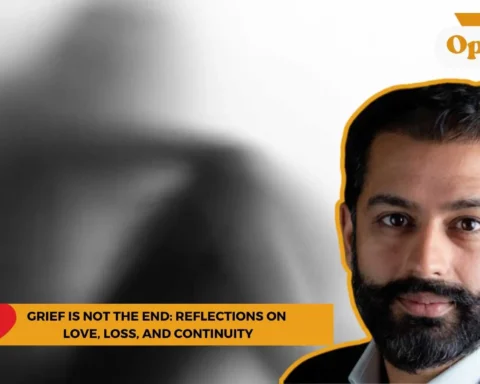Have you ever had yourself standing in front of an aisle in the cereals section of a grocery store, dumbfounded at the many options to choose from? Or have you ever spent hours on Amazon only to find yourself getting more perplexed as your finger endlessly rolls on the screen?
If yes, you have encountered the Paradox of Choice. Contrary to popular belief, this intriguing psychological phenomenon posits that having too many options can lead to choice paralysis, ultimately leading to increased dissatisfaction rather than satisfaction, as one might usually expect.
The Appeal of Abundance: The Root of The Paradox of Choice
Displaying a myriad of variations of each product has become a defining characteristic of an average 21st-century marketplace. Limited items on the store shelf are now ancient to the modern consumer. Factors such as globalisation, online shopping, and product innovation have all contributed to this explosion of choices. While it may look thrilling, too many options can lead to a frustrating psychological phenomenon: The Paradox of Choice.
Why Do We Initially See Abundance as Positive?
As you take your step into a glamorous shoe store and set your eyes on the fascinating shelves with dazzling shoes of many different colours, brands, and features, you find your heart racing with excitement at the seemingly endless options. This initial positive perception of abundance can be attributed to the urge to control our decisions and discover an item that is totally customised to cater to our needs. The fear of missing out (FOMO) is also an influential factor in driving the Paradox of Choice. As humans, consumers often crave to view all possible options in order to choose the best.
However, soon, you realise that you’ve been in the store for over an hour, feeling fogged with confusion. There are numerous downsides to abundance, and having a hundred different options in a store may not be ideal. This is largely attributed to our limited cognitive capacity, with the many products overwhelming our working memory, ultimately leading to confusion or choice paralysis.
Picture a scene where you are standing in front of a shelf with 50 types of shampoos, each offering a unique benefit, be it damage repair, anti-dandruff, or length increase. A fun hair-care haul gradually transforms into a stressful shopping task.
More is Not Always Better: The Consequences of the Paradox of Choice
Consequences to Consumers
With an abundance of products, the marketplace is the perfect spot for the Paradox of Choice to thrive and give rise to Choice Paralysis, which refers to the state of being ‘stuck’ or ‘frozen’ in confusion because of numerous alternatives to choose from. Being trapped in such a state contributed to frustration and stress.
Moreover, even after a choice has finally been made, it is common for consumers to experience anxiety regarding whether they have made the right choice. With so many options, consumers often feel pressured to make the right choice. Even after a selection has been made, it is common for us to experience anxiety regarding whether we have made the right choice, giving rise to ‘What-Ifs’ and ‘If-Only’ thoughts.
‘Oh, what if I chose the dress with the sweetheart neckline instead?’ or ‘If only I looked a bit more, I would have found something even better than this.’
This cycle of running towards more, entering The Paradox of Choice, being trapped in Choice Paralysis, and feeling overwhelmed only leads to dissatisfaction and uncertainty.
Consequences to Sellers: Too Much Can Lead to Too Little
It’s not just consumers – Sellers beware of the Paradox of Choice as well. Research has demonstrated that too many choices can, in fact, drive people away from making a purchase due to the previously discussed phenomena. If they do, their satisfaction rates tend to be quite low.
One of the most groundbreaking research studies in this field by psychologists Iyenger and Lepper (2000) is the perfect example of how too much can lead to too little. On a fine day in the year 2000, consumers shopping in a food market were made to pass across a large table with 24 varieties of gourmet jam with a $1 off coupon being offered for purchasing any of the jams. Similarly, consumers were displayed a smaller table with just 6 varieties of jams with the same offer. Surprisingly, consumers exposed to the large table were 10 times less likely to purchase the jams in contrast to the consumers exposed to the smaller table with less variety.
Tips to Beat Choice Paralysis
As Barry Schwartz mentions in his book The Paradox of Choice,
“Choice has made us not freer but more paralyzed.”
Although it’s a daily battle, there are many effective ways to make everyday decision-making in this modern world of abundance less stressful.
- Know what you want: Before you step into a store, always be confident and certain in what you’re searching for. A shampoo? What does your hair precisely need? Cereals? What are your dietary priorities and tastes like? Shoes? Are you looking for daily wear or sportswear? Remember, the more certainty there is, the less confusion there will be.
- Run to Reviews: Often, making a decision solely based on the product information or the salesperson’s feedback can be unsettling, especially in the case of shopping goods. Try to focus your research majorly on customer reviews either online or in your social circle.
- Lower your Standards to ‘Good Enough’: Shift your mindset and get some peace. Settle for the item that works well enough instead of aiming for the best and draining your energy.
With the modern marketplace running behind to become the ‘land of plenty’, the paradox of choice is an interesting phenomenon that shapes consumer behaviour. By recognising this phenomenon and learning how to control it, our lives as consumers may become a tiny bit easier with improved satisfaction in this world of abundance.
Do you have burning thoughts or opinions? We’d love to hear them! Share your thoughts and ideas in the comments below to get the conversation flowing, or feel free to reach out to us at larra@globalindiannetwork.com.









